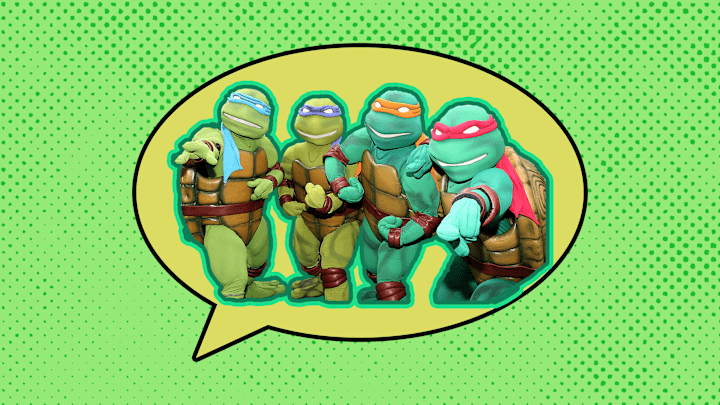When “cowabunga!” was first uttered on a TV show for kids, it wasn’t by a turtle. Instead, it came out of the mouth of Chief Thunderthud, a now-very-offensive side character from the 1950s children’s show Howdy Doody.
As a made-up word first coined by Howdy Doody creator Edward Kean and spoken into existence by Thunderthud actor Bill LeCornec, kowabonga (as it was originally spelled by the show) first entered the collective lexicon in 1954 as a way of expressing surprise or anger. It was presumably part of Thunderthud’s herky-jerky “native language,” which he spoke as head of the Ooragnak—kangaroo spelled backward—tribe.
As Howdy-loving kids grew up, though, some began to make the phrase their own. Specifically, surfers in Southern California, who started to use it in the ‘60s as a way to convey the sort of exhilaration that can only really come with excitement and anticipation. Think: someone yelling “cowabunga!” as they drop in to surf a 10-foot wave, or the sort of surf equivalent of “banzai!”
Turtle Time
Cowabunga kicked around the surf scene for a couple decades, joining phrases like goofy foot (used to describe a surfer who rides with their right foot forward) and shooting the curl (meaning to “[surf] the hollow part of a wave as it crests [overhead].”). And then, in 1987, when looking for out-there words to use in introducing the audience to the skater/surfer/stoner-coded Michelangelo in the Teenage Mutant Ninja Turtles animated series, writer David Wise called upon it too.
Interestingly, the phrase didn’t pop into Wise’s mind because he was a surfer himself. Rather, he chose to use it simply because the scene he was writing had Michelangelo sort of street-surfing over some object and he remembered a Peanuts cartoon from the ‘60s where a surfing Snoopy used the phrase. Fred Wolf, an animator on the Turtles series, liked the use of it so much that he suggested it become Michelangelo’s catchphrase, and the rest is turtle history.
For the few years, the Michelangelo character relied pretty heavily on cowabunga, saying it in movies like 1990’s Teenage Mutant Ninja Turtles, where it’s introduced to the turtles by Splinter, and in video games like 1991’s Teenage Mutant Ninja Turtles: Turtles In Time, where it’s used when everyone’s favorite reptilian heroes finish levels. Michelangelo even performed a pretty terrible rap track called “Cowabunga” on the “Coming Out of Their Shells” tour, to rather cringeworthy effect. As the TMNT franchise took off, though, so did cowabunga, landing everywhere from t-shirts to The Simpsons.
Yet, time moves on and trends fade: When Nickelodeon launched its own Teenage Mutant Ninja Turtles animated series in 2012, it chose to replace the word with booyakasha. It became Michelangelo’s catchphrase for about two and a half seasons until the “Meet Mondo Gecko” episode, when the titular lizard reintroduces cowabunga and Mikey starts saying it from time to time.
Writers working with the turtles have been able to have a little fun with the phrase since, with the 2014 movie revealing that Raphael had convinced Michelangelo not to use it so much. In 2023’s Teenage Mutant Ninja Turtles: Mutant Mayhem, it’s not actually uttered by a character until the end of the movie, a conscious choice made by the writers in an effort to set their characters apart from the original series.
Of course, that didn’t stop basically every media outlet from using the phrase in headlines about the movie or its subsequent box-office success, and really, can you blame them? As any good surfer (or turtle) will tell you, there’s just something special about that silly little word.
